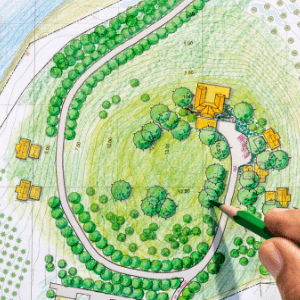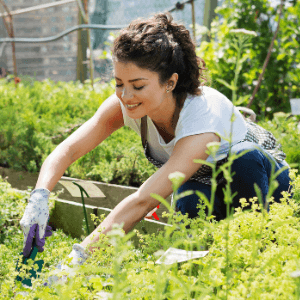As homeowners and landscapers, it's our job to take care of the environment and encourage people to live in a way that doesn't hurt it. Sustainable landscaping is an essential part of this, and it's a great way to create a beautiful and functional outdoor space while minimizing our environmental impact. This article will talk about how important it is to have a sustainable landscape and give tips and ideas for designing and taking care of one.
The Importance of Sustainable Landscaping
Sustainable landscaping creates a beautiful, functional outdoor place with minimal environmental impact. By using methods and materials that are good for the environment, we can save water, cut down on pollution, and protect natural resources. Sustainable landscaping can also reduce urban heat island effects, enhance air quality, and provide wildlife habitat.
Planning and Design
When designing a sustainable landscape, starting with a plan is essential. The first step is to select the right plants for your climate and soil. By choosing plants that do well in your area, you can water less and use less pesticides and other chemicals. Also, if you use native and indigenous plants in your design, you'll be helping to protect biodiversity and support local wildlife.
Another critical aspect of designing a sustainable landscape is reducing maintenance and lawn care. This can be done with hardscaping and other landscaping features, like porous surfaces, which reduce the amount of lawn that needs to be cared for. Furthermore, xeriscaping and water-wise gardening techniques can help conserve water and reduce irrigation needs.
Implementing Sustainable Practices
One of the best ways to create a sustainable landscape is to follow sustainable practices. One of the most important of these is composting. You can reduce landfill waste and increase soil health by composting yard waste. Reduce pesticide and chemical use in your landscape to protect the environment and promote plant health.
Another sustainable practice that can be implemented in landscaping is rainwater harvesting. Collecting and storing rainwater can reduce your reliance on municipal water and conserve resources. Additionally, mulch and other organic matter can improve soil health and reduce erosion.
Maintenance and Upkeep
Keeping a sustainable landscape in good shape takes ongoing work, but the benefits are worth it. One of the most important things to do is monitor and evaluate your sustainable practices' effectiveness. This will help you identify areas for improvement and adjust your strategy over time.
Common issues and problems, like pests or diseases, can be solved with organic pest management techniques and other environmentally friendly methods. Also, it's important to change and adapt your sustainable landscape over time, because different strategies may be needed as conditions change.
Conclusion
Sustainable landscaping is essential to protecting the environment and promoting sustainable living. By following the tips and strategies discussed in this article, you can create a beautiful and functional outdoor space that is also eco-friendly.
Choose low-maintenance plants that thrive in your climate and use sustainable practices like composting, rainwater collection, and organic pest management.
Finally, monitor and analyze your sustainable behaviors and alter your sustainable landscape over time.




